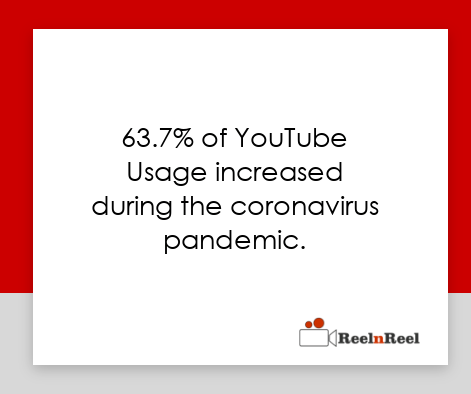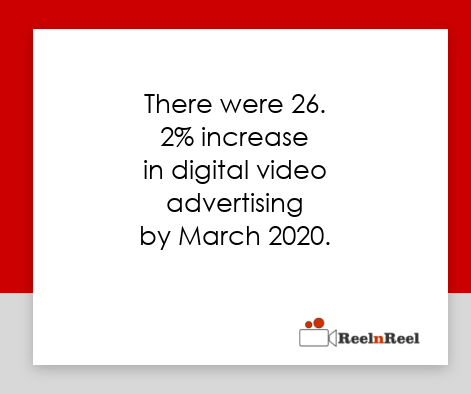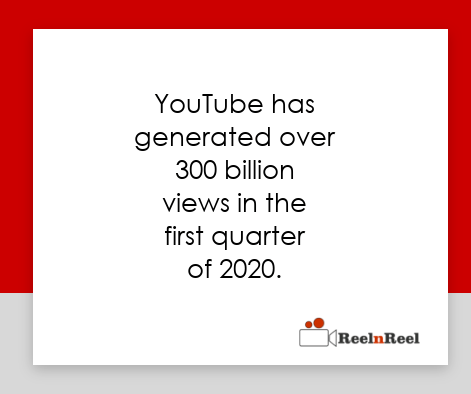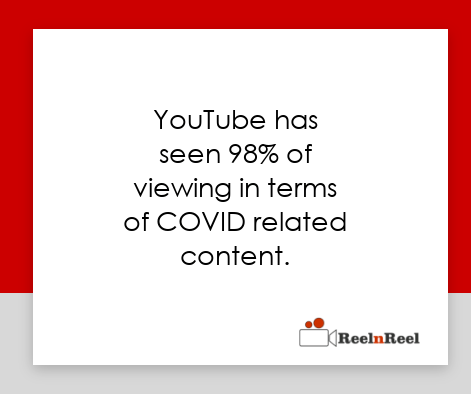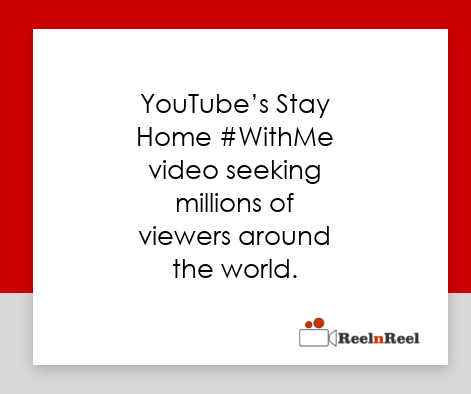The Coronavirus pandemic (COVID-19) has significantly impacted daily life, including how people consume video content. Video consumption substantially changed as the world adapted to lockdowns, social distancing measures, and remote work, reflecting consumer behavior and preference shifts.
50 Video Consumption Statistics During Coronavirus Pandemic
-
-
Global online video consumption increased by 65% during the pandemic as people sought entertainment and information while staying at home (Nielsen, 2020).
-
In 2020, the average person spent 100 minutes per day watching online videos, up from 67 minutes in 2019 (Limelight, 2020).
-
Streaming video consumption in the United States grew 74% year-over-year during the pandemic (Comscore, 2020).
-
Subscription-based video-on-demand services increased by 71% during the pandemic as consumers sought access to various content (App Annie, 2020).
-
YouTube saw a 15% increase in daily active users during the early stages of the pandemic as more people turned to the platform for news, tutorials, and entertainment (YouTube, 2020).
-
Netflix added nearly 16 million new subscribers during the first quarter of 2020, a record-breaking increase driven by global lockdowns and stay-at-home orders (Netflix, 2020).
-
Time spent watching videos on smartphones increased 30% year-over-year during the pandemic as users sought convenient and portable entertainment options (App Annie, 2020).
-
TikTok’s user base grew by 70% during the pandemic as short-form video content became a popular form of escapism and creative expression (Sensor Tower, 2020).
-
Video conferencing tools like Zoom saw a surge in usage, with daily active users increasing by 350% as people worked from home and looked for ways to stay connected (Zoom, 2020).
-
E-learning platforms boomed during the pandemic, with video-based courses seeing a 78% increase in enrollments (Coursera, 2020).
-
-
-
Livestreaming platforms like Twitch and Facebook Gaming experienced a boost in viewership as people sought live, interactive content instead of in-person events (Twitch, 2020).
-
Overall, 55% of consumers reported watching more video content online during the pandemic, with many citing increased free time and a need for distraction as reasons for increased consumption (HubSpot, 2020).
-
Gen Z and Millennial viewers were the most likely to increase their video consumption during the pandemic, with 65% of viewers in these age groups reporting an uptick in video viewing (HubSpot, 2020).
-
News consumption through video increased by 61% during the pandemic as people looked for timely updates and trusted information sources (Tubular Labs, 2020).
-
During the pandemic, YouTube saw a 75% increase in viewership of news-related videos as users sought information from traditional media outlets and independent creators (YouTube, 2020).
-
Time spent watching movies through streaming services increased by 78% during the pandemic as people looked for longer-form, immersive content (Nielsen, 2020).
-
Comedy and light-hearted content saw an increase in viewership during the pandemic, with many viewers seeking relief from stress and anxiety (Tubular Labs, 2020).
-
DIY and home improvement video content experienced a surge in popularity, with an 81% increase in viewership as people took on new projects while spending more time at home (YouTube, 2020).
-
Consumption of fitness and wellness video content increased by 120% during the pandemic as people sought to stay active and maintain their health at home (YouTube, 2020).
-
Video-based social media platforms like Instagram and Snapchat saw increased usage during the pandemic, with users sharing video updates and connecting with friends in real time (eMarketer, 2020).
-
-
-
The average length of videos watched increased during the pandemic as viewers sought more in-depth and engaging content to fill their free time (HubSpot, 2020).
-
Binge-watching behavior increased during the pandemic, with viewers watching an average of 4.5 hours of content in a single sitting (Nielsen, 2020).
-
SVOD (Subscription Video on Demand) services saw an increase in subscribers during the pandemic, with the average household subscribing to 3.1 services (Deloitte, 2020).
-
AVOD (Ad-Supported Video on Demand) platforms also experienced growth during the pandemic, as cost-conscious consumers sought free or low-cost video content options (IAB, 2020).
-
During the pandemic, virtual private networks (VPNs) increased as viewers sought to access geo-restricted video content and ensure online privacy (GlobalWebIndex, 2020).
-
Video game streaming experienced a surge in popularity, with platforms like Twitch seeing a 101% increase in viewership during the pandemic (Twitch, 2020).
-
Esports events and tournaments pivoted to online formats, attracting record-breaking viewership as fans sought competitive entertainment without traditional sports (The Esports Observer, 2020).
-
Live concert streams became popular entertainment during the pandemic, with many artists hosting virtual performances and festivals (Billboard, 2020).
-
The pandemic accelerated the adoption of streaming video services among older demographics, with viewers aged 50 and above increasing their online video consumption by 45% (Nielsen, 2020).
-
Children’s video content saw a significant increase in viewership during the pandemic as families sought engaging and educational programming for their kids (YouTube, 2020).
-
-
-
Viewership of travel-related video content increased during the pandemic as people sought virtual escapes and inspiration for future trips (ThinkwithGoogle, 2020).
-
Podcasts with video components experienced growth during the pandemic as listeners sought visual elements to enhance their audio experiences (eMarketer, 2020).
-
User-generated video content gained popularity during the pandemic as viewers sought authentic and relatable content from fellow consumers (HubSpot, 2020).
-
Video content related to mental health and mindfulness experienced a surge in viewership as people sought support and guidance for their well-being during the pandemic (YouTube, 2020).
-
The average video production budget decreased during the pandemic as marketers and content creators adapted to remote production and smaller crews (HubSpot, 2020).
-
The demand for video editing software and tools increased during the pandemic as more people created and edited video content from home (TechCrunch, 2020).
-
Virtual reality (VR) and 360-degree video content saw a rise in interest during the pandemic as users sought immersive experiences from the safety of their homes (Forbes, 2020).
-
Video-based language learning platforms experienced growth during the pandemic as people sought to develop new skills and hobbies (TechCrunch, 2020).
-
The use of video for corporate communications increased during the pandemic as companies shifted to remote work and sought ways to engage their employees (Forbes, 2020).
-
Live shopping events and video-based e-commerce gained traction during the pandemic as retailers sought innovative ways to reach consumers online (eMarketer, 2020).
-
-
Video content consumption on smart TVs grew during the pandemic as people sought larger screens and shared viewing experiences (Nielsen, 2020).
-
Video-based social networking apps like Houseparty and Marco Polo experienced increased usage during the pandemic as people sought new ways to connect with friends and family (Sensor Tower, 2020).
-
Video content related to cooking and recipes saw a surge in viewership during the pandemic as people spent more time cooking and experimenting in their kitchens (YouTube, 2020).
-
The use of video content in online education grew during the pandemic as schools and universities shifted to remote learning models (World Economic Forum, 2020).
-
Video-based telehealth services gained popularity during the pandemic as patients sought virtual consultations and medical advice from the safety of their homes (Forbes, 2020).
-
Video advertising shifted towards more contextual and empathetic messaging during the pandemic as brands sought to connect with consumers more deeply (ThinkwithGoogle, 2020).
-
User-generated video reviews and testimonials became more influential during the pandemic as consumers sought authentic feedback before purchasing online (HubSpot, 2020).
-
Video content creators saw increased brand partnerships and sponsorships during the pandemic as companies sought innovative ways to reach their target audiences (Influencer Marketing Hub, 2020).
-
The demand for live translation and captioning services for video content increased during the pandemic as companies sought to make their content accessible to global audiences (Forbes, 2020).
-
The pandemic accelerated video consumption trends and created new opportunities for content creators, platforms, and advertisers. As the world continues to adapt to the lasting effects of COVID-19, video will remain a crucial medium for entertainment, communication, and connection.
Conclusion:
The COVID-19 pandemic significantly impacted video consumption habits worldwide as people adapted to new realities and sought ways to stay entertained, informed, and connected. The 50 statistics presented here illustrate how video content became essential to people’s daily lives during this unprecedented time.
From streaming services and user-generated content to virtual events and video-based communication, video consumption trends during the pandemic showcased the versatility and importance of this medium. As people spent more time at home, they relied on video content for entertainment, education, and social connection, driving substantial growth in viewership, subscriptions, and overall engagement.






